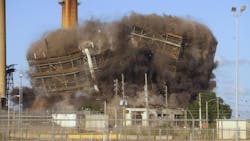Microsoft, Google, Nucor Take Lead in Defining Clean Energy Pathways for Hyperscale Decarbonization
In mid-March 2024, hyperscalers Google and Microsoft, along with sustainable steel and steel products company Nucor, put out an RFI [request for information] to the energy industry, with a goal of developing business models that would encourage the development of advanced clean energy technologies and address the demand for those technologies.
Everyone Can Take their Shot at Clean Energy
The RFI , while specifically identifying advanced nuclear, next-generation geothermal, clean hydrogen, and long-duration energy storage (LDES) technologies, was effectively an open call. It asked any technology provider who felt they had an applicable solution to respond with their solution to address the demand for firm, dispatchable clean energy technologies.
The goal of these technologies was identified as replacing fossil fuel energy generation, supporting existing renewables for solar and wind with additional, reliable, carbon-free energy sources, and building a methodology to cost-effectively decarbonize the energy grid.
The RFI cited the International Energy Association’s roadmap for the global energy sector “Net Zero by 2050” report which is a comprehensive study of how the world can transition to net zero carbon-dioxide emissions while maintaining stable and affordable energy. Since the report was first issued in 2021, the number of countries that have pledged to announce the effort continues to increase.
Acknowledging that the major roadblock to the rapid development of carbon neutral and net-zero decarbonization technologies has been an unwillingness to finance these potentially risky new approaches, the RFI was looking specifically for methods that could reduce the risks for early commercial developments undertaken by utilities and developers while enabling the investments necessary.
As part of the RFI, Nucor, Microsoft and Google have assured project transparency. Each company will share their lessons learned and the pilot project roadmaps, while offering encouragement to other companies to look at how they can find ways to support additional clean energy projects.
Alignment with other Advanced Power Projects
While not explicitly pointed at the development of advanced nuclear energy projects, the RFI uses the target goal of “the 2030’s” for these projects to come online, which is coincidently the target dates for those nuclear projects on which we have previously reported.
The RFI points out that much of the expected risk is minimized by the energy demands of the three sponsoring corporations; among the world’s largest consumers of power and industries that regularly sign PPEs that can provide financial guarantees to entities providing new sources of net-zero carbon solutions.
In a very realistic approach to making decarbonization a priority, the companies involved in the RFI will make use of pilot projects to that will focus on proving the practicality and effectiveness of the demand aggregation and procurement model.
The demand aggregation model, which will pool the total energy demand, is expected to provide clear benefits to large-scale energy buyers via:
- Better procurement efficiencies.
- Minimizing development risk on a per project basis.
- Enabling the purchase of larger volumes of carbon-free electricity from a portfolio of sources
The initial project delivery framework will look to enhance project enablement by:
1. Signing offtake agreements for technologies that are still early on the cost curve.
2. Bringing a clear customer voice to policymakers and other stakeholders on broader long-term ecosystem improvements.
3. Developing new enabling tariff structures in partnership with energy providers and utilities.
The RFI closed to new proposals on April 12th. So we should soon be technology proposals making news as the options are considered.
Duke Energy Might Have an Ace in the Hole
In a related development, and what might be considered a first step towards actual implementation of efforts to drive clean energy development along with improved energy security, Amazon, Google, Microsoft, and Nucor announced at the end of May that they would be partnering with Duke Energy to adopt a new rate structure proposal that can accelerate clean energy deployment.
These Accelerating Clean Energy (ACE) tariffs are a plan that can allow major customers of Duke Energy to aid in reducing power sector emissions.
The four companies have signed memorandums of understanding to work on developing new tariff structures that are designed specifically to reduce the costs in investing in advanced energy generation and distribution technologies, such as new forms of nuclear power and long-duration energy storage.
As suggested by the earlier RFI, the new tariff structures would encourage the investment by these four companies in technologies that can support carbon-free energy generation.
This encouragement would take the form of contributions that directly address the project risks as well as innovative financing structures that could potentially lower the cost of developing these new technologies.
These new tariffs would also encourage technology development that data centers have been moving towards, such as on-site power generation.
Duke is also looking to customize tailored solutions for each of these customers, primarily via the Clean Transition Tarriff (CTT), a component of the ACE framework.
With the CTT Duke would be able to match power demands to clean energy slut5ions within their portfolio, making the decarbonization of the customer load and the overall grid load potentially happen more quickly.
At press time, the new tariff proposals still required government approval.
About the Author




